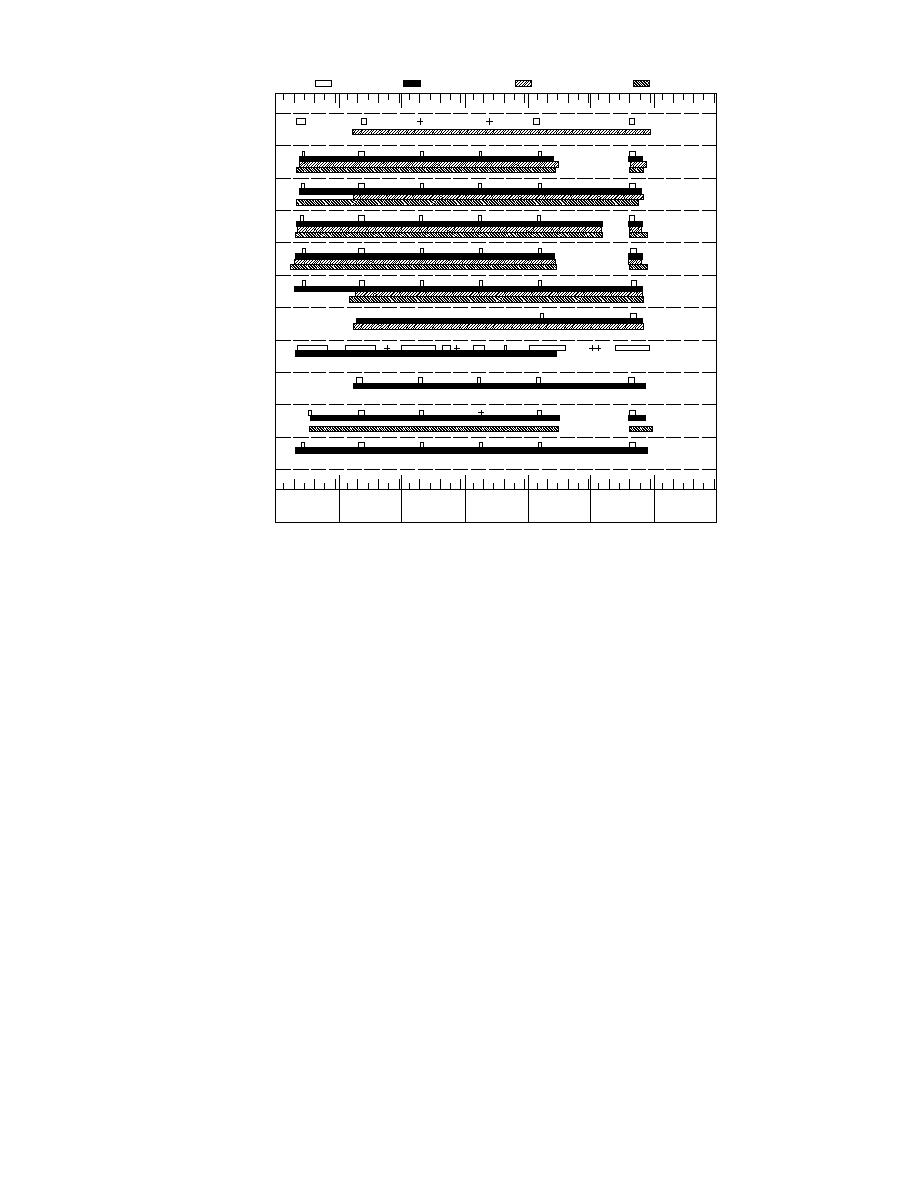
TSS
Hydrolab
Ultrasonic
Flow
Coast
Mortar Gully
Bread Truck
In-Between
Parachute
B-Gully
Racine Gully
River
A-Pond
C-Pond
Racine Pond
10 20
10 20
10 20
10 20
10 20
10 20
10 20
May 1995
Jun
Jul
Aug
Sep
Oct
Nov
Figure 18 (cont'd). Extent of data collection at hydrostation sites from 19931995.
(1.2-m) square plywood deck mounted on a 2-
Hydrostation configuration
8-in. (about 5- 20 -cm) wood frame. Large metal
The instrumentation and samplers for water
eyehooks were screwed into the frame on each
quality analyses were identically set up at each
corner. Five-foot (1.5-m) sections of 0.75-in. (2-
gully and pond site (hydrostations). Sensors and
cm) -diameter steel pipe were mounted vertically
the suction sampler intake screen were mounted
in 20-gal. (75.7-L) cans filled with concrete, and
on a stake driven into the bottom of the pond or
the eyehooks mounted on the platform's wood
gully under investigation. Mounting hardware
frame lowered over them. Foam filling the inner
was identical at each hydrostation to permit us to
space of the deck framework provided flotation
precisely position them in the water column. Sen-
so that the platform could move vertically up and
sors in gully sites were placed in plunge pools to
down the steel pipes during tidal flood and ebb,
keep them wet at all times, usually about 15 to 45
keeping the datalogger and related devices dry
cm above the bed. Current probes were mounted
during the highest flood levels. Dataloggers were
about 1 m above the bed on separate stakes lo-
installed in NEMA plastic enclosure boxes
cated downstream of the plunge pool within a
mounted on 2-in. (about 5-cm) vertical steel pipes.
reasonably symmetrical gully cross section. Ul-
Solar panels of 18-W output were fastened to the
trasonic sensors were mounted on an arm attached
pipes above the dataloggers to recharge the 12-V
to a metal stake located about 10 m from the
external battery.
platform. Each was aimed downward towards
the mudflat surface, upon which a plate was
WP transport and resuspension
pinned to provide a stable, reflective surface.
Plankton nets of 3-m length with an opening of
Instrumentation, including the ISCO sampler,
1 m and a mesh size of 80 m were placed at four
was located on a floating platform either on the
gully sites, three of which were previously moni-
mudflat next to gully sites or within the ponds
tored in 1994 (Fig. 17). The plankton net was tied
(Fig. 19). Each platform was constructed of a 4-ft
24



 Previous Page
Previous Page
